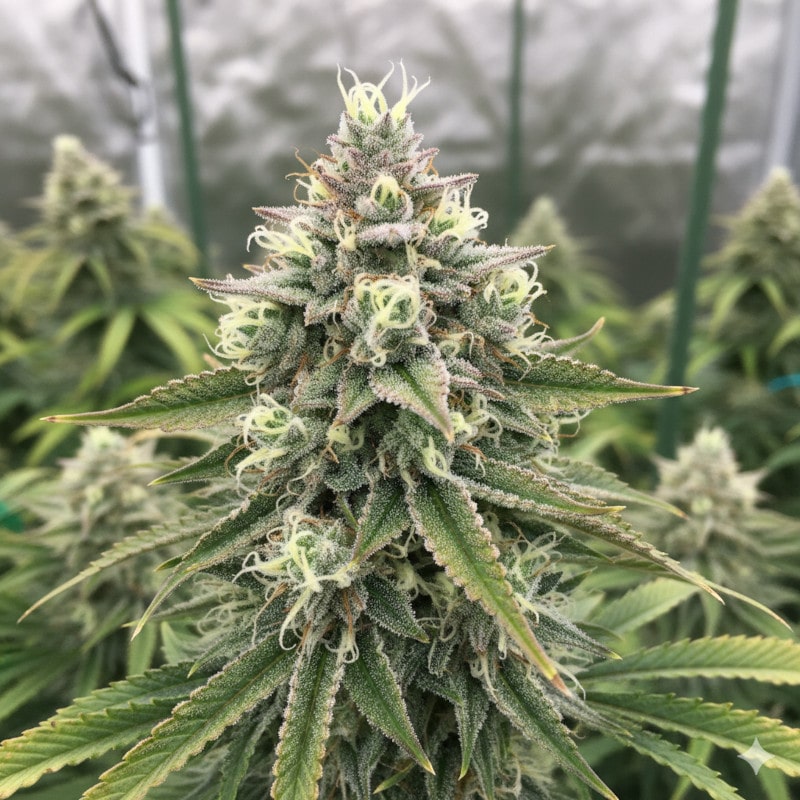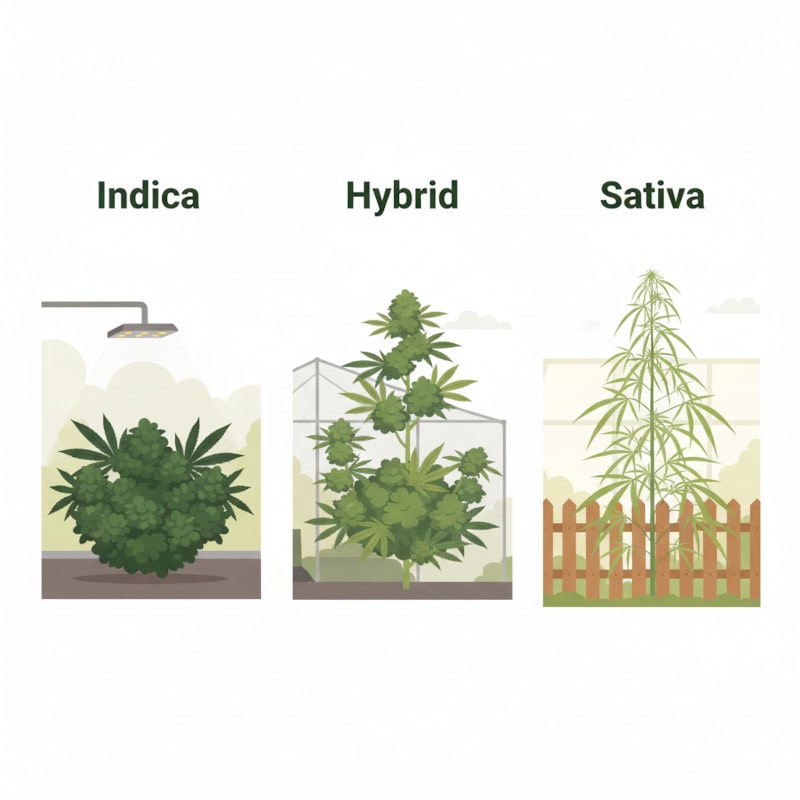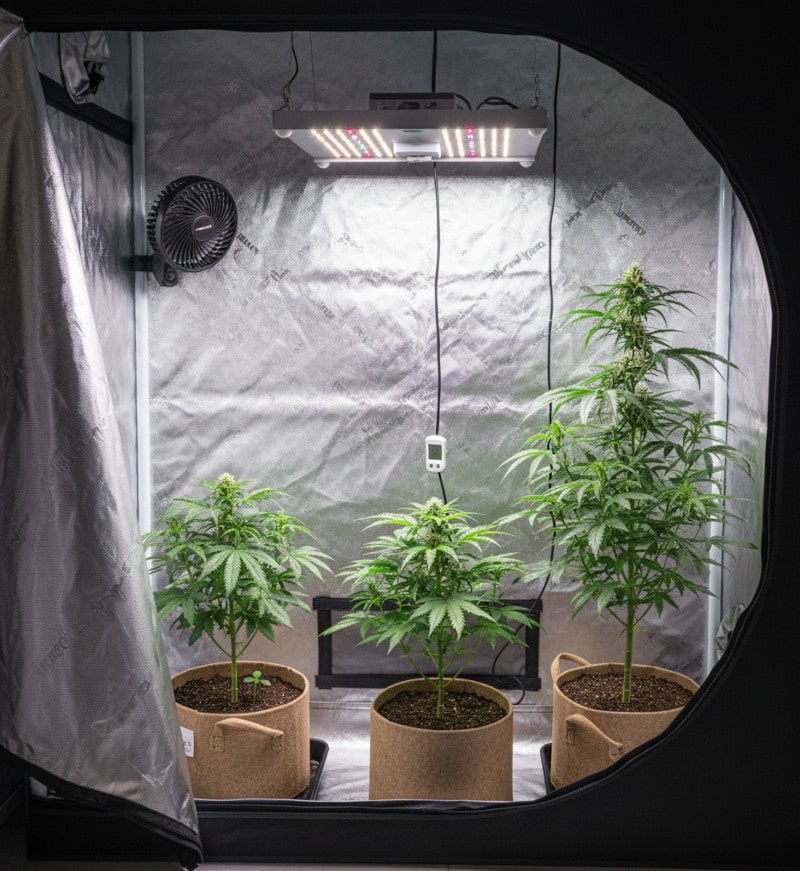Growing autoflowering cannabis
Autoflowering Seeds: The Complete Guide to Fast Growing And Easy Harvests
Updated: Oktober 2025 | Outdoor Cannabis Cultivation
Author: Cannapot Grow Team | Reading time: 10 minutes

Unlike regular photoperiod plants, autoflowers kind of do their own thing. They start flowering automatically, no need to mess around with light schedules or fancy timers. You just plant them, give them light, and let them do their thing. Pretty simple.
If you want them to do well, there are a few things that really make a difference:
-
Timing: Everything happens fast with autoflowers, so keeping an eye on each stage helps a lot.
-
Genetics: Pick a strain that actually fits your space and what you want out of it. That small decision can save you a lot of trouble later.
-
Care: Light, nutrients, and soil all affect your harvest.
Chapter 1: What Are Autoflowering Seeds?
The Science Behind Autoflowers
Autoflowering cannabis is a bit of a game changer, right? Basically, autoflowers are created by crossing Cannabis ruderalis (which, fun fact, is known for its auto-flowering traits) with indica and sativa plants.
The cool thing about ruderalis is that it doesn’t need a change in light schedule to start flowering. It’s all about age. So, instead of worrying about the light cycle, it just flowers when it’s ready. This makes it perfect for people who want a quicker, simpler harvest whether they’re growing indoors or outdoors.
These days, autoflowers are much more reliable and powerful than before. A lot of them can match the quality of the photoperiod strains (those are the ones that need specific light schedules to flower) but they finish up in only 8–12 weeks. That's a big win for growers who don’t want to wait forever.
Why Grow Autoflowers?

|
Advantages |
Drawbacks |
|
No light schedule change needed (keep lights on 18–20h daily) |
Slightly smaller yields per plant |
|
Short life cycle — harvest in 2–3 months |
Limited training time |
|
Compact size, ideal for tents, balconies, and stealth setups |
Sensitive to overfeeding or transplanting |
|
Multiple harvests per year possible |
|
|
High resistance to stress and climate changes |
|
Expert Tip– Keep It Simple
“Autoflowers thrive on consistency. Keep temperature, watering, and feeding steady. They do not need perfection — they need stability.”
— Adi P., Cannapot Grow Specialist
Chapter 2: Choosing the Right Autoflower Genetics
Choosing your genetics is where your grow truly begins.
Your strain selection affects everything — height, yield, aroma, and effect.

Indica, Sativa, or Hybrid – What’s Right for You?
Okay, so you’ve probably heard the terms Indica, Sativa, and Hybrid thrown around a lot. If you're not sure which one suits you, don’t worry, it’s actually pretty simple. Here's a quick breakdown:
-
Indica-Dominant Autoflowers
-
These ones are compact and bushy, and they grow fast.
-
They’re great if you need something for indoor growing and they’ll give you relaxing, body-heavy effects.
-
Think of them like the "chill" option.
-
Examples: Northern Lights Auto, Critical Auto.
-
-
Sativa-Dominant Autoflowers
-
These plants are a little taller and tend to have more uplifting effects.
-
They do take longer to flower, so they’re best suited for outdoor grows or larger spaces like big tents.
-
These are the ones you reach for if you want something more energizing.
-
Examples: Amnesia Haze Auto, Diesel Auto.
-
-
Balanced Hybrids
-
If you want something in the middle, hybrids are your best bet.
-
They have steady yields, are medium height, and give you a nice balance of effects—nothing too heavy, nothing too light.
-
Examples: Gorilla Glue Auto, Blueberry Auto.
-
THC, CBD & Terpenes – Choose Your Experience
-
High THC:
-
These are potent, euphoric, and pack a strong punch.
-
If you want to get that classic high feeling, these are the ones.
-
-
High CBD:
-
If you’re looking for something more calming and functional, high CBD strains are great.
-
They can be therapeutic without making you feel out of it.
-
-
Balanced:
-
These give you the best of both worlds—relaxed but still clear-headed.
-
If you want something that you can use daily without feeling too sluggish, this is your sweet spot.
-
Expert Tip:
“Do not ignore the terpene profile. Myrcene tends to relax; limonene lifts your mood. Terpenes change the entire feel of your strain.”
Match Genetics to Your Setup
Ask yourself:
-
How much space do I have?
→ Small tent? Choose short indica autos. -
How soon do I want to harvest?
→ Pick a fast finisher (8–9 weeks). -
What’s my experience level?
→ Start with forgiving, stable strains like Auto Northern Lights or Auto White Widow.
Expert Tip:
“If it’s your first time, go for genetics labeled ‘easy to grow.’ The difference in stress tolerance is huge — and you’ll learn faster.”
Chapter 3: The Autoflower Life Cycle
Autoflowers grow on a fixed biological clock.
You cannot extend the vegetative phase, so every day counts.
Here’s how to manage each stage efficiently.
Phase 1: Germination

-
Use the paper towel method or plant directly in moist soil.
-
Keep temperature between the 22–25°C.
-
Once a white taproot appears (1–2 cm), place it root-down in soil.
-
Avoid heavy watering — damp, not soaked.
Expert Tip:
“Plant directly into the final pot. Transplanting can shock autos and cost you 3–5 days — a lot in an 8-week grow.”
Phase 2: Seedling Stage (Week 1–2)

-
Keep light on for 18–20 hours daily.
-
Maintain humidity around 70%.
-
Use mild or no nutrients — seedlings feed from stored energy.
-
Focus on airflow and stable warmth.
Expert Tip:
“If your seedling stretches, move your light closer — but not too close. 40–50 cm for LEDs is a safe start.”
Phase 3: Vegetative Growth (Week 2–4)
-
Light schedule: 18–20 hours of light daily.
-
Feed light vegetative nutrients (high nitrogen).
-
Avoid topping — use LST (Low Stress Training) for better light distribution.
-
Watch humidity (keep around 60%).
Expert Tip:
“Autos don’t forgive overwatering. Let the top inch of soil dry before watering again.”
Phase 4: Flowering (Week 4–10)

-
Plants start producing pistils the first sign of flowering.
-
Switch nutrients to bloom formula
-
Maintain 20–25°C and lower humidity to ~45–50%.
-
Avoid unnecessary movement or defoliation.
Expert Tip:
“At the first sign of flowers, lower nitrogen. Too much N delays bud development.”
Phase 5: Harvest (Week 8–12)
-
When 70–90% of pistils darken and trichomes turn cloudy, it’s harvest time.
-
Flush with plain water 1–2 weeks before harvest to improve flavor.
-
Dry in a dark, open area at ~20°C for 7–10 days.
-
Cure buds in glass jars, opening daily for two weeks.
Expert Tip:
“Use a magnifier to check trichomes — clear means too early, milky is ideal, amber gives a deeper, sedative effect.”
Chapter 4: Indoor vs Outdoor Autoflower Growing
Indoors

-
Control temperature, humidity, and lighting precisely.
-
Keep a steady 18/6 or 20/4 light cycle.
-
Ideal for small, discreet setups or year-round harvests.
Outdoors

-
Great for warmer climates and natural sun light.
-
Multiple harvests possible per season (spring, summer, early fall).
-
Choose strains bred for outdoor.
Expert Tip:
“For outdoor grows, avoid planting before the last frost. Autos like warmth from the start.”
Chapter 5: Setup, Feeding & Environment
Soil & Pots
-
Use light, aerated soil (coco + perlite mix works great).
-
Pot size: 10–15 liters (3–4 gallons) for best yields.
-
Always plant directly in the final pot.
Water & Nutrients
-
pH: 6.0–6.5 (soil) or 5.8–6.2 (coco).
-
Use half-strength nutrients early on — autos need less than photoperiods.
-
Increase bloom feed during flowering weeks.
Expert Tip:
“If in doubt, underfeed. You can always add more — but you can’t un-burn roots.”
Chapter 6: Training & Yield Optimization
Because autoflowers grow fast, gentle techniques work best:
-
LST (Low Stress Training): Bend branches to spread light evenly.
-
Defoliation (light only): Remove large leaves blocking light.
-
Avoid topping: Too risky with limited recovery time.
Expert Tip:
“Use soft ties for LST. Never snap stems — bend gradually over two days if needed.”
Chapter 7: Expected Yields
Yield depends on genetics, care, and environment:
-
Indoors: 50–150 g per plant
-
Outdoors: 100–250 g per plant
-
Cycle: 8–12 weeks seed to harvest
Expert Tip:
“More light = more yield. Autoflowers respond directly to DLI (Daily Light Intensity). Keep lights close — but cool.”
Chapter 8: Common Mistakes to Avoid
-
Overwatering – the #1 autoflower killer
-
Transplanting – wastes precious days
-
Too much nitrogen in flowering stage
-
Changing light schedule unnecessarily
-
Ignoring pH and root health
Expert Tip:
“Think of autos like short-distance runners. Every day counts — consistency wins over perfection.”
Autoflower Success Checklist
-
Choose strain that fits your time, space & goals
-
Plant directly in final pot
-
Maintain 18–20h light cycle
-
Feed lightly, flush before harvest
-
Avoid topping or stress
-
Harvest when trichomes turn milky
|
Strain Name |
Type |
Ideal For |
Key Characteristics |
|
Indica-dominant |
Beginners, outdoor cultivation |
Fruity Afghan scent; 8–9 weeks to harvest |
|
|
Indica-dominant |
Budget-friendly, fast-growing |
Fruity aroma; 8–9 weeks to harvest |
|
|
Indica-dominant |
Outdoor growers, early harvest |
Fruity scent; 10-week cycle; 100–120 cm height |
|
|
Indica-dominant |
Flavor-focused, compact grows |
Sour, sweet, minty aroma; 9–10 weeks to harvest |
Conclusion: Grow Smart, Grow Fast
Autoflowering cannabis seeds are the future of fast, reliable growing.
With simple care, steady conditions, and the right genetics, anyone can enjoy premium-quality buds in under three months.
Whether you’re a beginner or a seasoned grower, autoflowers offer unbeatable convenience — and with expert knowledge, they deliver impressive results too.
Start Growing Today
Discover trusted Autoflowering Cannabis Seeds at Cannapot —
premium genetics, discreet shipping, and expert support to help every grow succeed.
